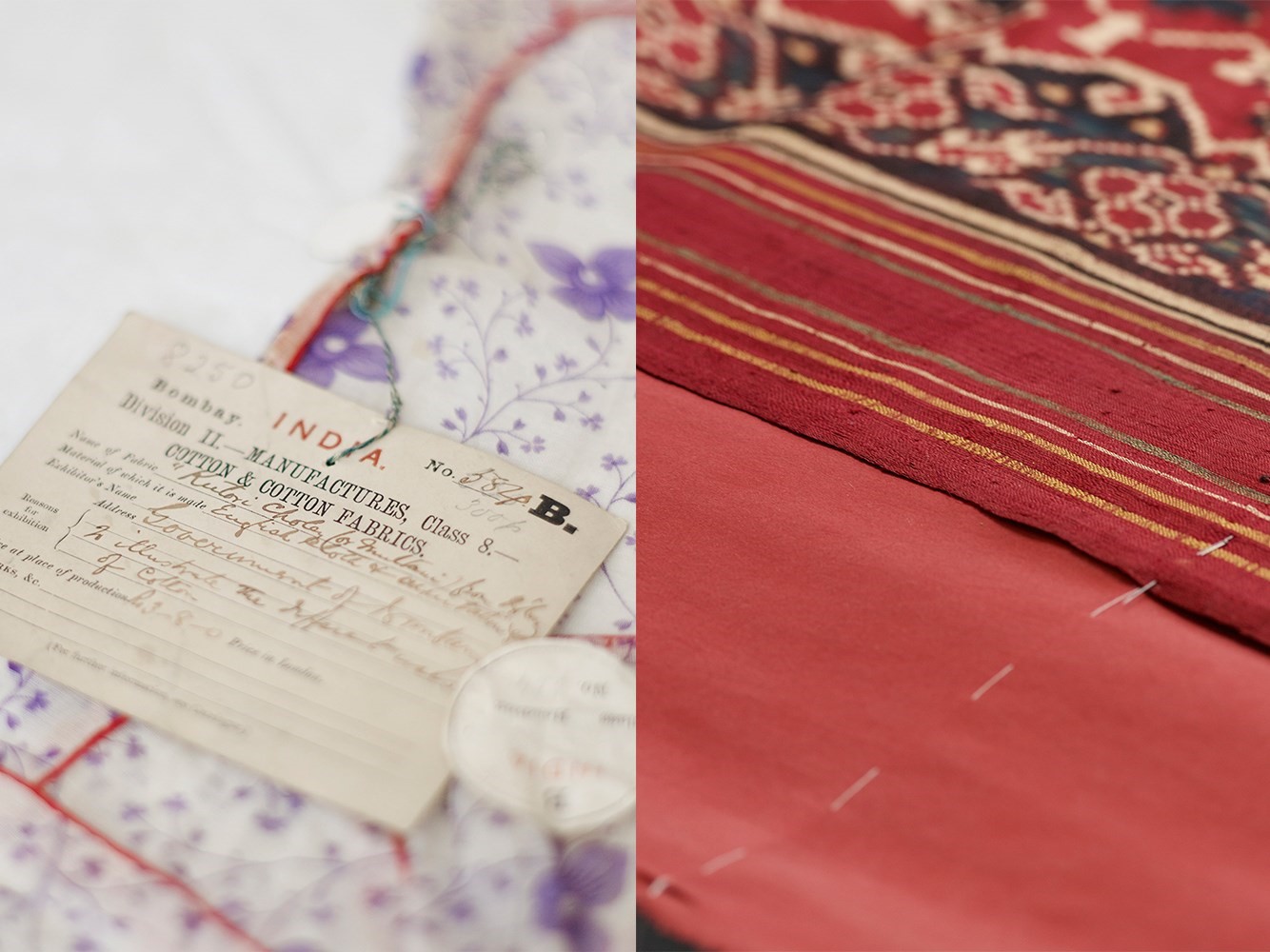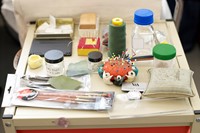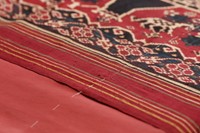The history of fabric production in India is as rich and nuanced as the breathtaking array of intricately spun, woven, dyed and embellished textiles it has borne. Now, a new exhibition at London's Victoria and Albert museum titled The Fabic of India offers audiences the unique chance to understand and dissect this age-old tradition, and of course view some of its most remarkable gems. Ahead of its opening, we explore the show’s myriad offerings, alongside a captivating set of behind the scenes images by French-born, London-based photographer Julia Grassi, who beautifully documents the conservationists at work in the build up to the final installation.
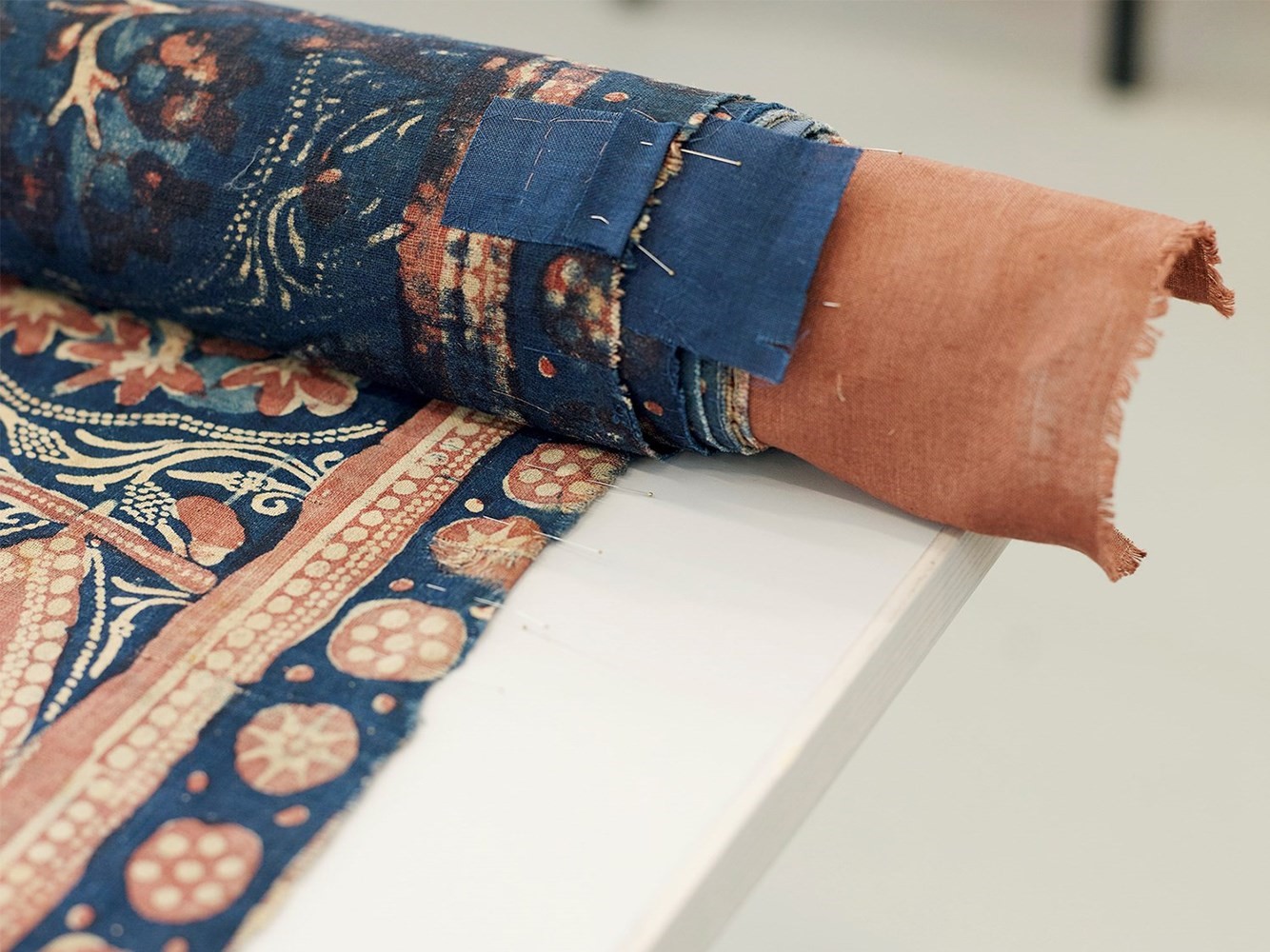
Stepping through the doors of the hallowed exhibition space, visitors are met with a sea of sumptuous hues, twinkling threads and lively patterns; as anyone who's ever been to India will know, it is country defined by its glorious use of colour. The objects on display vary greatly, from everyday pieces such as simply printed silk saris and a robust, cotton embroidered storage bag to more elaborate spectacles. A swathe of white muslin is adorned with delicate beetle wings which catch the light like petroleum, and the magnificent tent of Tipu Sultan – the notorious 18th century ruler of the Kingdom of Mysore – serves as a vast mobile palace decked out in suitably regal printed chintz. But for whatever purpose or occasion the fabric was created – big or small, humble or holy – the innovation and craftsmanship displayed in every piece is universally unfathomable. "We enjoyed the opportunity not just to display some of the wonderfully opulent and complex objects which we have acquired or been lent," explains co-curator Rosemary Crill, "but also the chance to bring out our much more ordinary but still absolutely beautiful material that people don’t usually see. I think it really helps to illustrate how incredibly varied and special each work is, in spite of the differences in cost or scale."
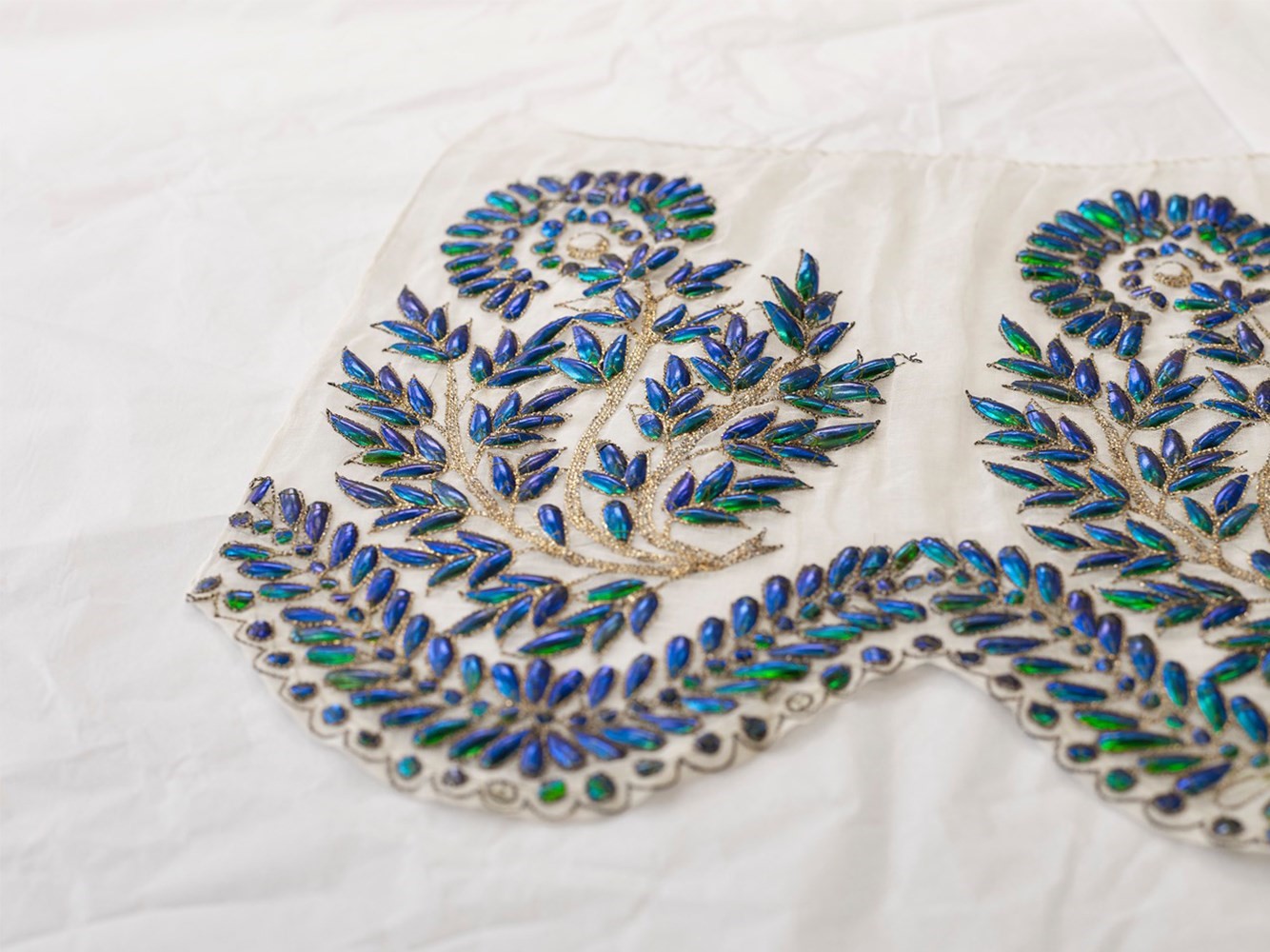
To help visitors delve deeper into the heritage of the various techniques employed, the display introduces us to the raw materials and processes of creating cloth by hand. We are invited to inspect wispy, cloud-like cocoons and spindly chay roots, before encountering the deliciously soft silk or luscious red chintz hangings these gifts of nature spawned. There are also fascinating examples of block printing, weaving and embroidery across the ages, awakening viewers to the exceptionally diverse array of fabrics that have been produced throughout India's history. The words of the Qu'ran are painstakingly inscribed on a 16th century Islamic shirt in ink and gold paint to offer the wearer talismanic protection, while a stunningly embroidered, Mughal hunting jacket boasts a verdant utopia of plants and exotic creatures, rendered in pastel hues on a white satin background. "Such pieces serve to demonstrate the extraordinarily assorted ways in which the Indian makers could tailor their manufacturing to the needs of their various patrons or markets," says Crill.
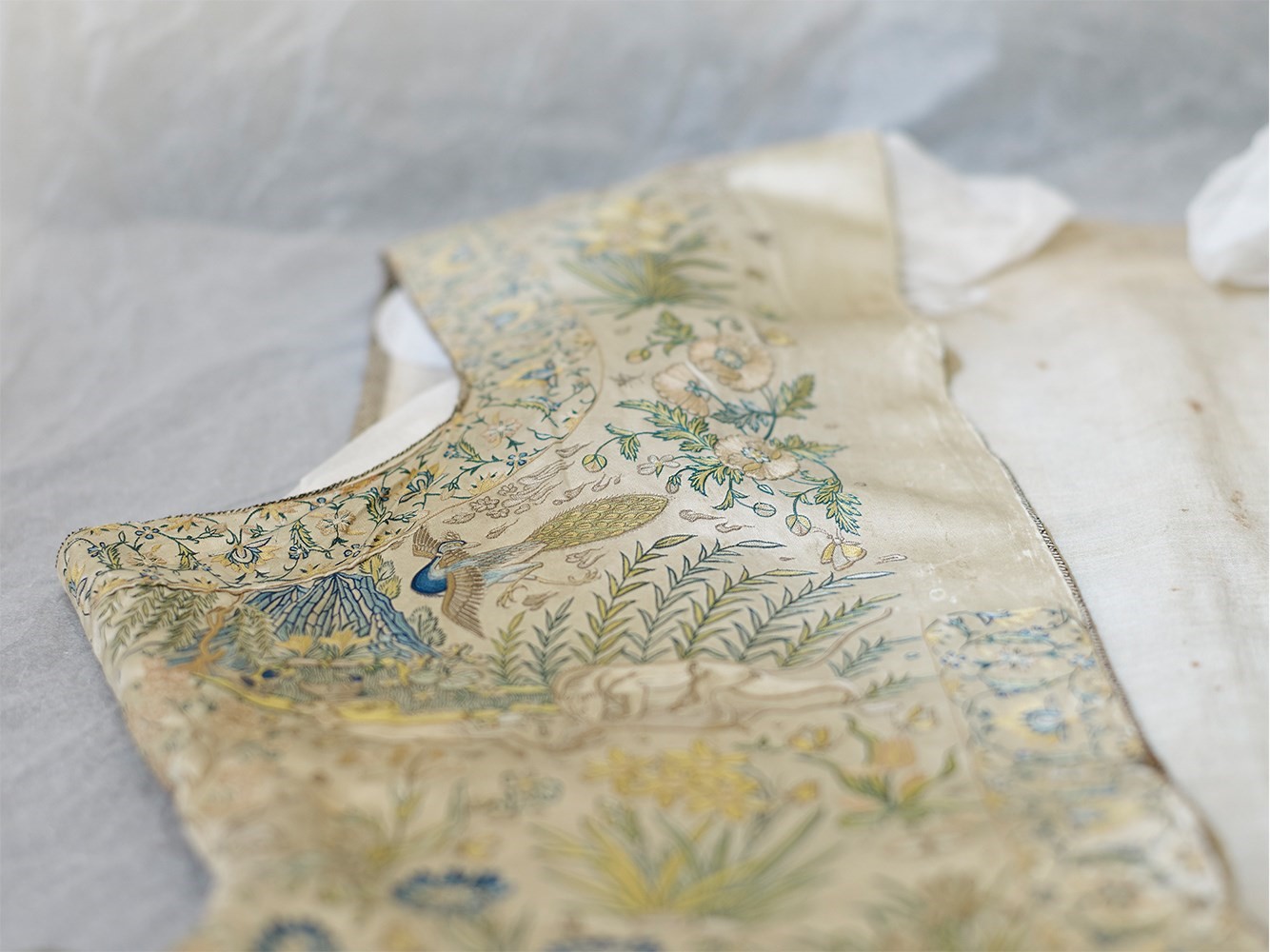
Indeed, the variation of buyers is another important focus of the exhibition. India has long relied on the economic benefits of exporting its celebrated fabrics to a global market – some of the earliest known surviving fragments of exported cloth are on display, dating back as far as the third century. Via a number of arresting objects – from a covetable set of plant-covered Austrian bed hangings once belonging to 17th century Prince Eugene to various chintz robes and dresses (a highly sought-after pattern in 17th and 18th century Europe) – we gain further insight into the shrewd flexibility of the Indian cloth producers in order to appeal to the different fashions of individual countries. Transversely, the show goes on to explore the devastating effects of European industrialisation upon the Indian fabric trade, when British mills began producing batches of imitation Indian cloth and importing it to India. "We have an album in the show called the Forbes Watson album," says Crill of an intriguing reference book compiled during this period. "It's one of 18 volumes of which 24 editions were created. What you see are sample fabrics along with the area in which they were made, meticulously documenting what was being produced in India so that they could be copied in the UK and sent back to be sold at a lower cost."
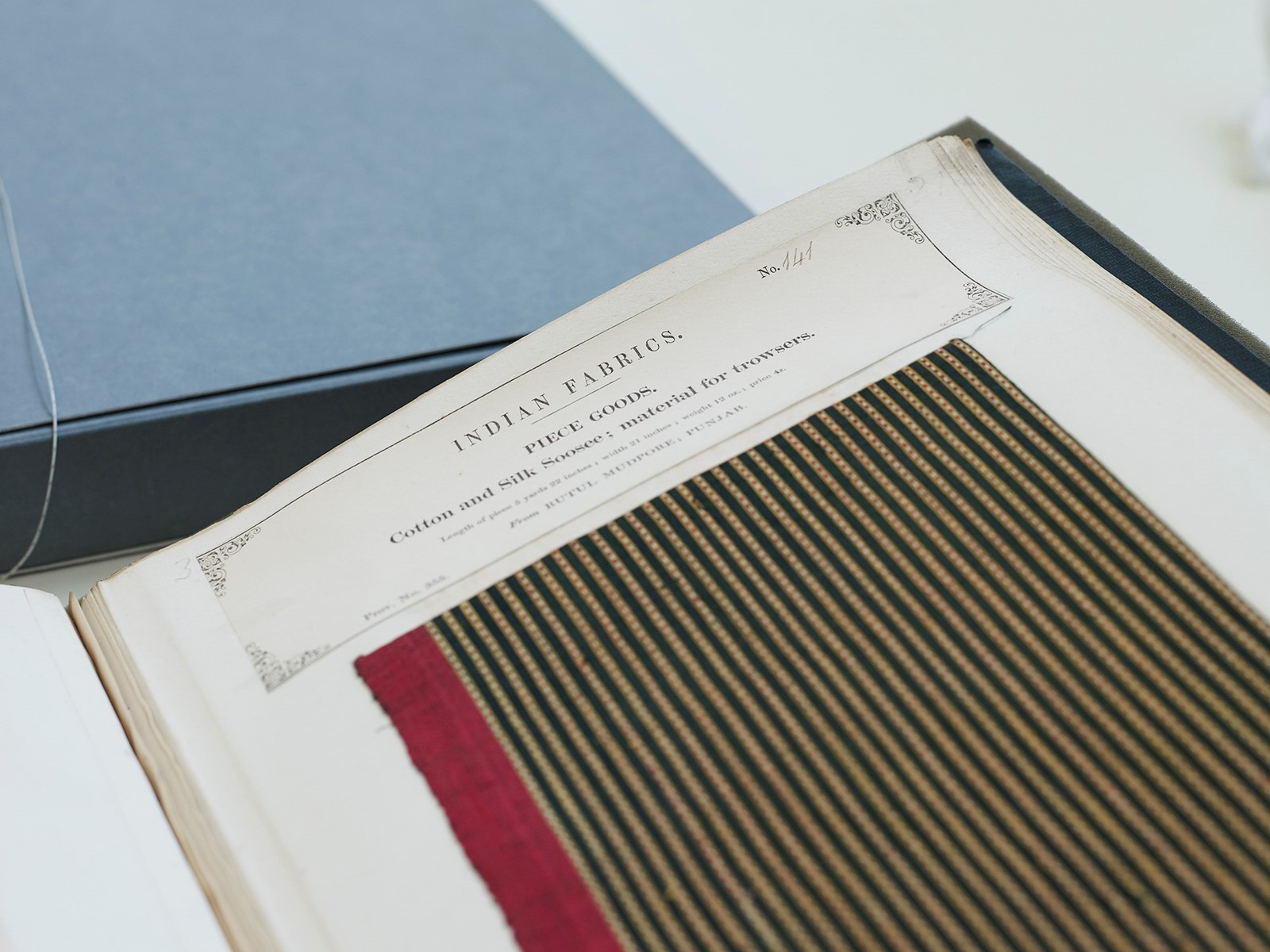
Interestingly, however, this huge blow to the country's cloth industry would later provoke a resistance movement that saw textiles take centre stage in the development of Indian nationhood and identity. The Swadeshi or 'Own Country' movement rallied support for indigenously produced goods, and called for the rejection of foreign imports. Handmade fabrics went on to become a key symbol of India's opposition to British rule, with Mahatma Gandhi calling for Indian natives to spin, weave and wear their own cloth known as Khadi. Various examples of Khadi's use in modern Indian design demonstrate the textile's enduring symbolism to this day. "We wanted to express the idea of Khadi being romanticised for its historic past," explains co-curator Divia Patel. "It is extremely difficult to produce but it's still being made; the government is giving huge subsidies to continue its production."

There are many other fantastic pieces showcasing India's contemporary fashion prowess and the continued use of traditional techniques – from a skull-adorned women's jacket by lauded designer Rajesh Pratap Singh, which sees the employment of digital methods to recreate the process of block printing to stunning effect, to a selection of pioneering reinterpretations of the sari, which bring the exhibition to a eye-popping climax. "The final section demonstrates the ongoing relevance of hand skills in Indian fashion," says Patel. "It shows you the direction in which the industry is going – there's this constant process of adaptation and innovation which keeps craftsmen employed and drives the business forward." The show is a miraculously in-depth yet whistlestop tour spanning centuries of deft skill and imagination, and you exit it very much aware that India's textile tradition is still an exciting work in progress.
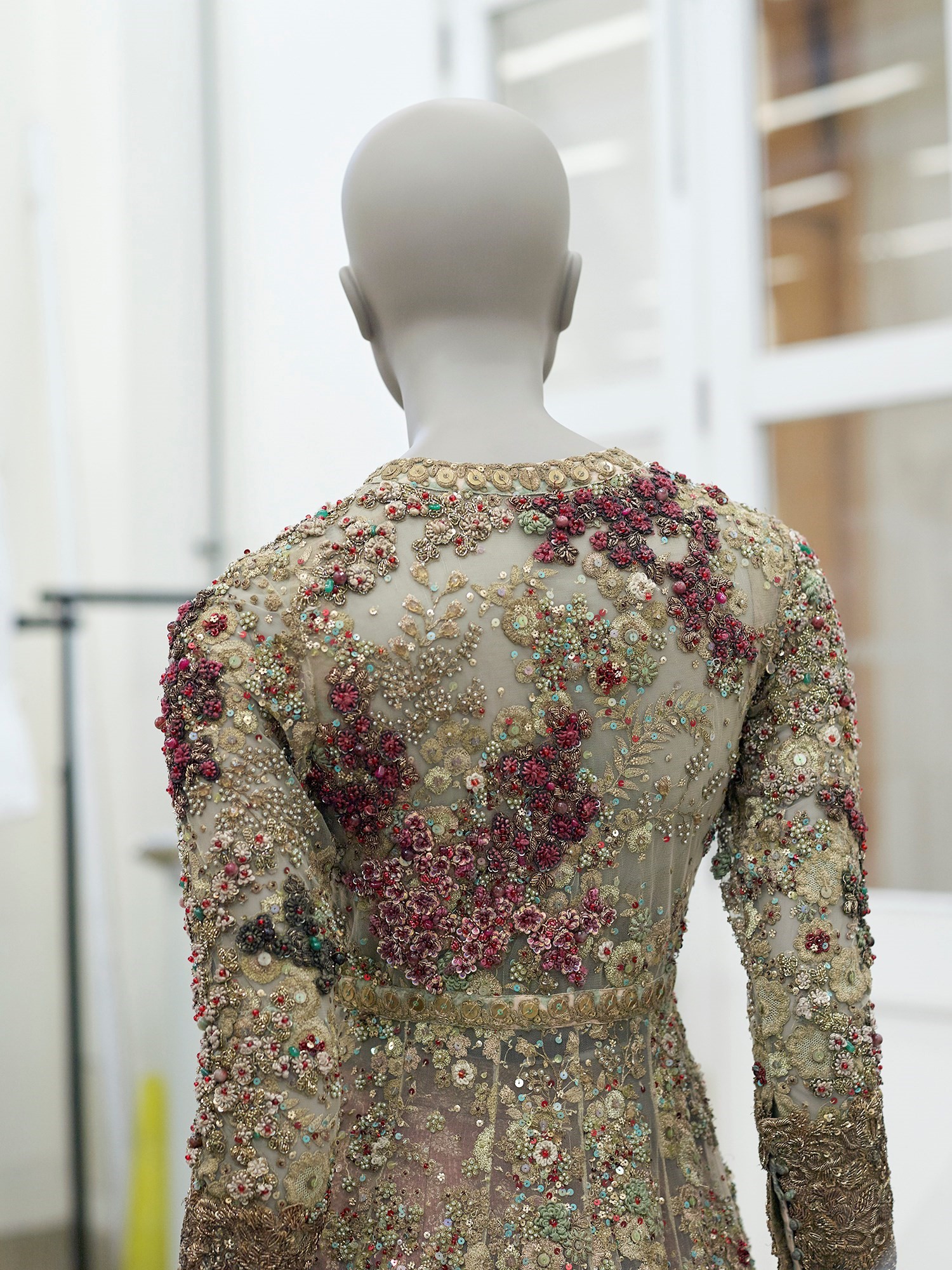
The Fabric of India is at the V&A from October 3 until January 10, 2016, supported by Good Earth.
